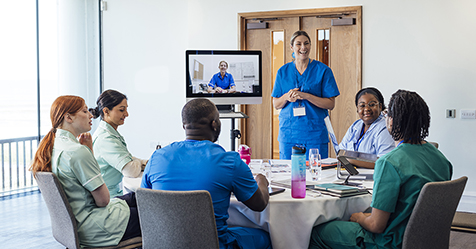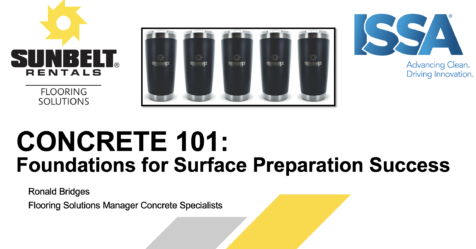Ergonomics is a science covering how to design and arrange objects and tools to achieve the most safe and efficient interactions. This doesn’t just apply to objects, though. It also applies to employees and how their managers interact with them.
Gene Woodard, building service director for University of Washington, recommends a principal called participatory ergonomics, which strays away from the top-down leadership model and replaces it with an inclusive style in which all employees are involved in learning, teaching, idea creation, brainstorming, and more. Emphasizing this type of employee participation cultivates an environment where employees feel valued, respected, and heard, which leads to increased team morale, employee retention, and employee dedication. This leads to a new style of leadership, which Woodard says is for the best. “It takes leading in a different way—an inclusive way—to build a culture of safety and trust,” Woodard says.
Woodard says most people don’t learn by exclusively watching or listening to instructions or demonstrations. A participatory ergonomics-centered leadership model underlines the process of reinforcing new learned behaviors among employees. Committing to positive reinforcement, supervised practice sessions, and training not only reduces risk of injuries, but also raises employee confidence, organically leading to heightened efficiency.
Participatory ergonomics isn’t just an idealistic philosophy; it works. Woodard has applied the practice at University of Washington with outstanding results, reducing expenses and chemical waste. Attendees of Woodard’s session will learn how to accomplish this as well as how to quantify this data.
Woodard’s session is for building service contractors and facility managers looking to analyze their organization and customize participatory ergonomics for their staff. Woodard’s building services department has received several awards for its work, emerging as a leader in the green cleaning industry, so there is no better teacher to expand upon how leaders can create, nurture, and reap the rewards of an inclusive environment.
Tip: Faster rarely, if ever, translates to better
A common misconception about ergonomics is that it encourages increasing the speed at which people perform tasks. In fact, speeding up cleaning routines often sharply raises the risk of injuries among employees, making it the enemy of ergonomics. The participatory ergonomics solution is to hold a brainstorming session—or as Woodard calls it, a “huddle session”—where employees and leaders alike discuss and highlight aspects of routines where time is wasted. For example, switching to microfiber pad mops that dispense cleaning solution can help eliminate the time spent switching out dirty water in mop buckets.
Note: This session will also feature co-presenter Tracey Mosier, employee safety manager at University of Washington.
Don’t miss other informative articles on hot topics that are guaranteed to help you with your company or facility:
- True or False: Green Cleaning Efforts Can’t Use Disinfectants
- How to Target Your Most Likely Contracts (and Close the Deal)
- How Environmental Services and Infection Control Teams Can Work Together
- Budget for the Lifespan of Your Facility
- Run, Hide, Fight: How Facilities Can Prepare for an Active Shooter Situation



